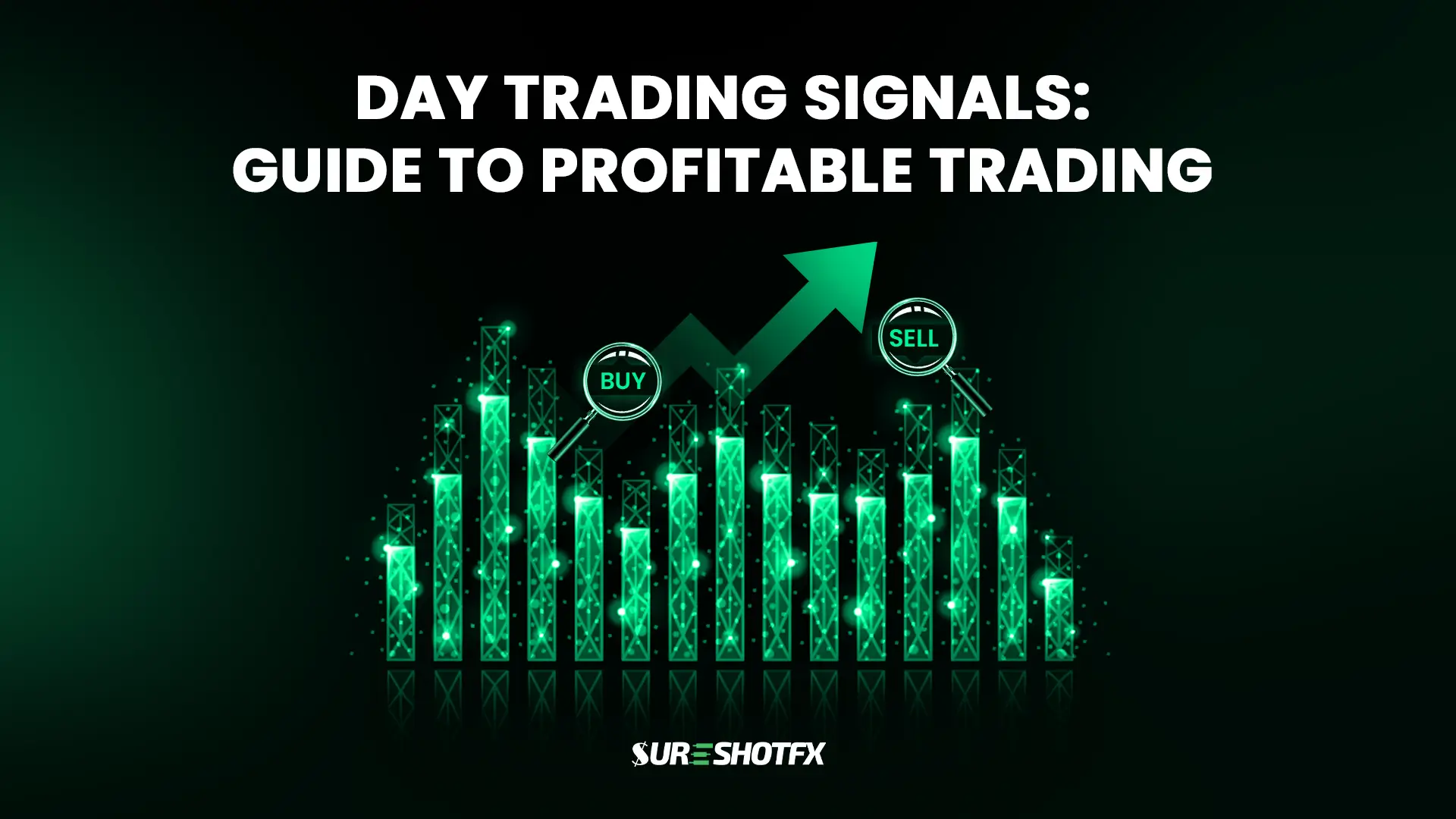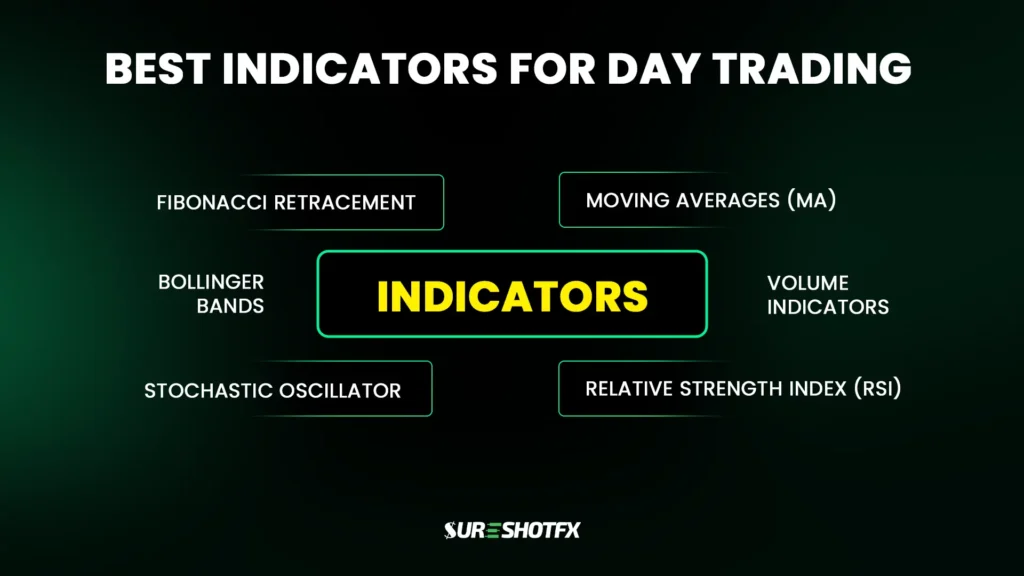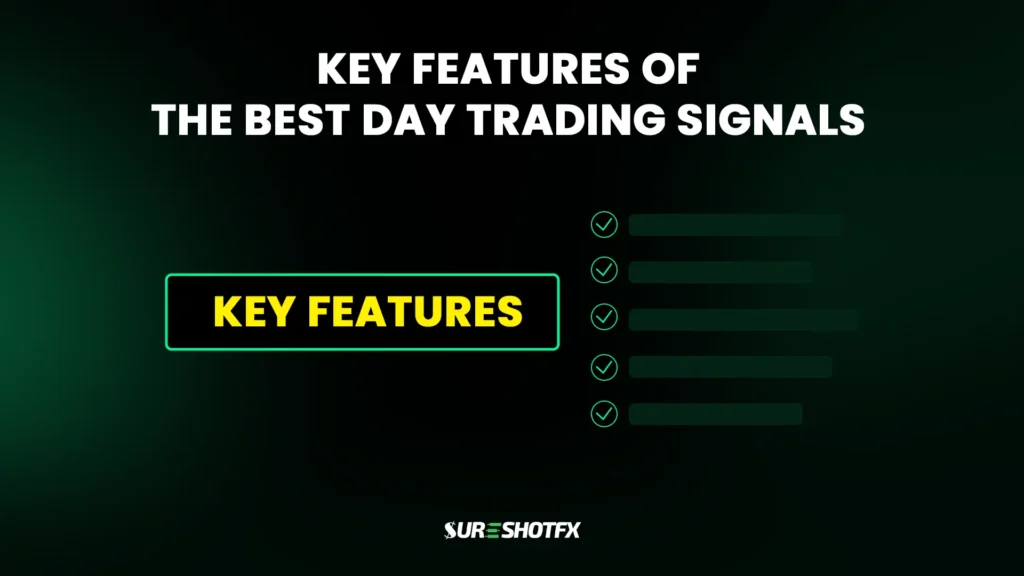Day Trading Signals: Your Guide to Profitable Intraday Trading

Day trading is one of the most exciting yet challenging ways to participate in the financial markets. With the potential for quick profits, millions of traders worldwide are drawn to Intraday trading. However, success in trading requires more than just luck—it demands a solid strategy, discipline, and access to reliable signals.
In this blog, we’ll explore everything you need to know about day trading signals, including their types, key features, and how to use them effectively.
What are Day Trading Signals?
Day trading signals are actionable alerts or indicators that help you identify optimal entry and exit points for trades within the same day. These signals guide you when to buy or sell a financial instrument, such as stocks, forex, or cryptocurrencies.
Whether you are a beginner or an experienced day trader, these signals can save time, reduce emotional decision-making, and improve your trading performance.
How Do Day Trading Signals Work?
These signals help traders make informed decisions about when to buy or sell an asset. Before you dive into the world of trading, explore the steps of how these signals work:
- Analysis of Market Data: These signals are generated using various analysis techniques, including some frequently used technical indicators for Day trading (like Moving Averages, MACD, and RSI), price action patterns, and fundamental news events.
- Signal Generation: The quality of signals generated by the provider varies based on their expertise and the tools they use. After thorough analysis, providers deliver the prospect signals, guiding your market decisions. It includes instructions such as:
- Entry Point: The price level at which to enter the market.
- Exit Point: The target price is the level at which to close the position.
- Stop-Loss: A level to limit potential losses.
- Take-Profit: The take-profit level is a target price to lock in profits.
- Signal Delivery: The signal is delivered to traders via automated alerts, signal services (like Telegram or Discord), or directly through brokers’ platforms. Timeliness is crucial, as Day trading often requires quick action.
- Trade Execution: After receiving the signal, the trader executes the trade, either manually or through automated trading systems. Quick execution is essential, especially in fast-moving markets.
- Monitoring and Adjustments: Once the trade is executed, the trader monitors the position. If necessary, stop-loss and take-profit levels may be adjusted. The trade is closed when the target is reached, or if the market moves against the position.
Types of Day Trading Signals
These signals are often used to enter or exit trades in short timeframes, typically ranging from minutes to hours. Here are some common types:
- Technical Analysis Signals: Based on price charts and best-day trading indicators like moving averages, RSI, MACD, support/resistance levels, and candlestick patterns.
- Fundamental Analysis Signals: Derived from economic data, earnings reports, and news events.
- Algorithmic Signals: Generated by automated trading systems using predefined criteria.
- Sentiment-Based Signals: Reflect market sentiment, often derived from social media or news sentiment analysis.
Top Sources for Day Trading Signals
- Paid Signal Services: Subscription-based platforms offering premium signals with advanced features.
- Free Signal Services: Basic signals are provided by signal providers in online communities.
- Broker-Provided Signals: Signals integrated into trading platforms by brokers.
- Self-Generated Signals: Signals created using your own analysis and tools.
Though some free services are fake, unreliable or even scams.
Who Uses Day Trading Signals?
These signals are widely used by:
- Retail Traders: Individual traders who engage in short-term trading to profit from market fluctuations.
- Professional Traders: Experienced traders who work for hedge funds, proprietary trading firms, or financial institutions.
- Algorithmic Traders: Algo traders use automated trading tools to execute trades based on predefined criteria.
- Copy Traders and Signal Followers: Those who follow expert traders or signal providers to copy their trades.
Pros and Cons of Using Day Trading Signals
Pros:
- Signals provide ready-to-use trade opportunities, saving analysis time.
- Reliable signals can improve trade accuracy.
- Clear entry/exit points help avoid impulsive decisions.
- Signals guide new traders in understanding market trends.
- Some providers include tips for managing risk, like stop-loss placements.
- Various strategies suit different market conditions.
Cons:
- Not all signals are accurate, risking potential losses.
- Following too many signals can lead to excessive trades and higher risks.
- Some signals may arrive too late for the best trade.
- Sometimes signals will not match your specific trading style.
- High-quality signals often come with a subscription fee.
- Dependence on signals may hinder skill development.
Best Indicators for Day Trading in 2025

Many day traders first consider which indicators to use. Here are some of the best technical indicators for Day trading every trader should know:
- Moving Averages (MA)
Moving Averages smooth out price data to create a trend-following Intraday technical indicator, helping traders identify the direction of the market. The two most common types are the Simple Moving Average (SMA) and the Exponential Moving Average (EMA). MAs are useful for spotting trends and potential reversal points.
- Relative Strength Index (RSI)
The RSI measures momentum, ranging from 0 to 100. A reading above 70 is overbought, and below 30 is oversold. For instance, a buy signal occurs when RSI rises from below 30, and a sell signal arises when it falls from above 70.
- Bollinger Bands
Bollinger Bands consist of a 20-day SMA and two outer bands that expand with volatility. If price touches the upper band, it could be overbought and suggested to sell, while touching the lower band may signal an oversold condition, presenting a buying opportunity.
- Volume Indicators
Volume plays an important role in confirming trends and price movements. It often helps identify the strength of a trend and can work alongside other indicators.
- Stochastic Oscillator
The Stochastic Oscillator compares an asset’s closing price to its price range. If it rises above 20 from an oversold condition, it signals a buy, and if it drops below 80 from an overbought condition, it signals a sell.
- Fibonacci Retracement Levels
Fibonacci retracement levels are drawn between two significant price points (e.g., a swing high and a swing low). These levels are used to identify potential support and resistance areas based on key Fibonacci ratios like 23.6%, 38.2%, 50%, 61.8%, and 100%.
- Moving Average Convergence Divergence (MACD)
MACD is a trend-following momentum indicator that shows the relationship between two moving averages of a security’s price. It’s one of the best Day trading indicators, helping traders spot changes in trend strength, direction, momentum, and duration.
Best Charting Software for Day Trading in 2025
The foundation of successful day trading lies in having the best charting software for day trading. A robust charting application allows you to analyze price movements, identify trends, and execute trades with precision.
In 2025, platforms like TradingView, Thinkorswim, and MetaTrader are expected to dominate the scene. These tools offer advanced features such as customizable charts, real-time data, and seamless integration with brokers.
Key Features of Some Popular Day Trading Signals

The best signals service for day trading should possess the following features:
- Accuracy: Reliable signals should have a proven track record of success. Make sure you choose signal providers with a consistent performance history.
- Timeliness: Signals need to be provided at the right moment. In the fast-paced world of day trading, timing is everything.
- Clear Entry and Exit Points: Effective signals come with precise entry and exit points. They should also include suggested stop-loss and take-profit levels.
- Risk Management: A good signal service will incorporate risk management features, such as pre-defined stop-loss levels, to protect your capital.
- Consistency: The best signals are consistent, providing actionable insights regularly to help traders succeed.
How to Choose the Best Day Trading Signals
When selecting a signals service for day trading, you should consider the following factors-
- Understand Your Trading Style: The first step in choosing the right signals for day trading is to understand your trading style. Identify whether you’re a scalper, momentum trader, or range trader, as each style requires different types of signals. Choose signals that align with your strategy.
- Source Reliability: Select providers with a good reputation, transparent methodologies, and positive reviews. Avoid services that lack credibility or fail to disclose their performance metrics.
- Signal Accuracy: Check the historical performance, win rate, and risk/reward ratio of the signals. Reliable signals should have a proven track record of success.
- Timeliness: Day trading is a fast-paced activity, so timely signals are essential. Make sure the provider offers real-time alerts that match the frequency of your trading strategy. Delayed signals can lead to missed opportunities or poor trade execution.
- Cost: While cost shouldn’t be the only factor, it’s important to consider the subscription fees and whether the service offers good value for the price. Compare different providers to find one that fits your budget without compromising on quality.
- Support and Education: Choose providers that offer strong customer support and educational resources to help you understand and use the signals effectively.
How to Use Day Trading Signals Effectively
- Combine with Your Analysis: Use signals alongside your own technical and fundamental analysis to confirm trades. Avoid relying solely on signals without additional context.
- Risk Management: Implement proper risk management techniques, such as position sizing, stop-loss orders, and diversification, to protect your capital.
- Backtesting: Test the signals on historical data and practice with a demo account to ensure they work well with your strategy before using them in live trading.
- Start Small: If you’re new to using day trading alerts, start with smaller trade sizes until you become more comfortable with how the signals work.
- Discipline: Stick to your trading plan and avoid emotional decisions. Only act on signals that fit your strategy, and avoid overtrading.
- Monitor and Adjust: Regularly review your performance and adjust your strategy based on results and changing market conditions.
- Stay Informed: Keep up with market news and trends to stay ahead. Continuous learning and adaptation are key to long-term success.
Who Provides the Best Daily Stock Signals in the USA?
For traders who are looking for daily stock signals, the choices are abundant. Several platforms and signal providers are available for delivering day trading signals with high accuracy. Here are some popular options where you find the best stock signals in the USA:
- Stock Signal Groups: Online communities like Discord or Telegram offer paid or free stock market signals in real-time.
- Stock Signals App: Many trading apps, such as Stock Signals Pro or Trade Ideas, provide timely buy and sell signals.
- Free Stock Trading Signals: Platforms like Free Stock signals offer basic signals for traders starting out.
Conclusion:
Day trading signals are a valuable tool for traders looking to make quick, informed decisions. Whether you’re focused on stocks or forex, using the best stock trading signals or forex signals from trusted day trading signal providers can give you the edge you need to succeed. Moreover, the right combination of technical indicators for day trading can make a huge difference in your performance.
FAQs:

Day trading involves buying and selling financial instruments like stocks, forex, or commodities within a single trading day.
It can be profitable if you know how to use the best indicators for day trading.
Yes, it is legal as long as the signals are provided by a legitimate and licensed service.
There are several Forex Signal Providers available. One such Forex Signal provider is SureShotFX which can help you maximize your trading profits.
The best indicator for trading gold depends on your strategy. Commonly used indicators include:
Moving Averages (MA)
Relative Strength Index (RSI)
Bollinger Bands
MACD (Moving Average Convergence Divergence)
Fibonacci Retracement
SureShotFX gives the best VIP Gold signals in the SSF Telegram Channel.
Gold signals are typically more stable, while silver signals are more volatile, requiring different strategies for each.




Day trading can be a real rush, but it also requires quick, informed decisions. Using reliable signals, whether for stocks or Forex, can definitely help sharpen your edge. Platforms like SureShotFX offer solid Forex signals that many traders rely on for timely insights. Combining those signals with the right technical indicators can really take your performance to the next level. It’s all about having the right tools to navigate the fast-paced world of day trading with confidence.
hi